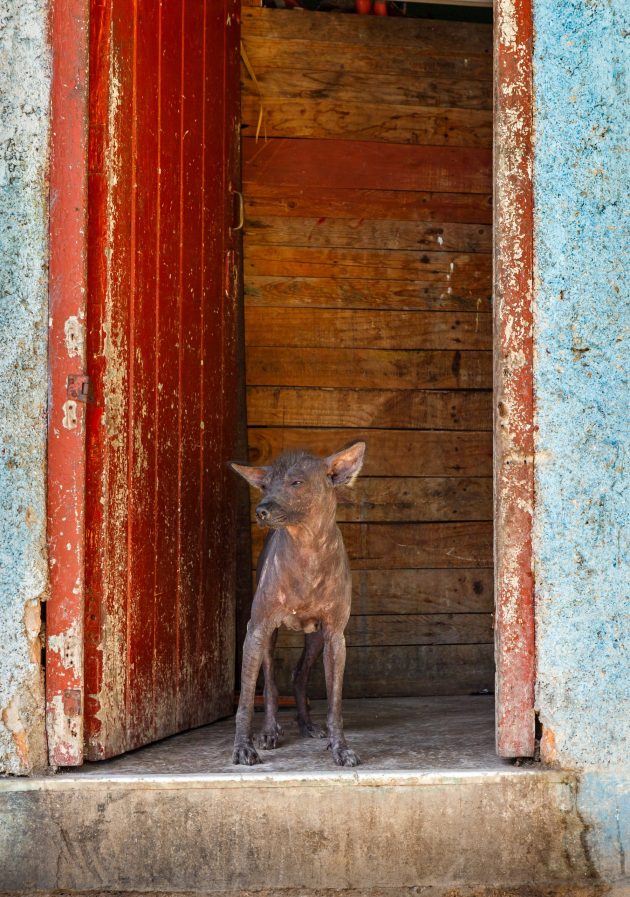
Not all of the dogs mentioned on these pages are officially recognized dog breeds; Some are extinct breeds whose DNA lives on in some breeds today; others are considered “landraces,” dogs linked to specific geographic areas that evolved and adapted to their local environments, often breeding true over generations. Those we believe are worth discussion as several breeds acknowledged as purebred dogs were once considered landraces.
Sometimes, however, we talk about dogs of whom we’re just not sure. The Abyssinian Sand Terrier is such a dog.
Also known as the African Hairless Dog, these dogs originated in Abyssinia, known today as Ethiopia. As their name implies, they are completely hairless except for small tufts of fur on their head or tips of their tails. They come in different shades of gray, sand, black or bronze, have rose-shaped or bat-like ears, and are described as being fearless, loyal and willing to please. Like some other hairless breeds, the Abyssinian Sand Terrier is thought to have magical healing powers because its warm body eases the aches and pains of arthritis.
Note: The paragraph you just read may be inaccurate for the present tense verbs we used.
You see, some sources refer to the breed as extinct and known only through preserved taxidermy specimens such as the one in the Walter Rothschild Zoological Museum in Tring, England. According to Desmond Morris’ Dogs: the ultimate dictionary of over 1,000 dog breeds, three examples of the breed were brought to Britain in 1833 and were displayed at the London Zoo as Egyptian Hairless dogs. Unfortunately, we found no further references to those dogs.
Other sources refer to the breed as extant, which is to say they exist today. The contemporary photo at the top taken by lindahughes is listed as an Abyssinian Sand Terrier Dog, and it strongly resembles the stuffed dog at the Rothschild Zoological Museum. However, we never did find hard evidence of where one can find a breeder, let alone where one can see a living example of the breed.
We don’t doubt that the breed existed. Besides the stuffed dog at the Museum that went on display in 1903, there are early accounts out of Africa that mentioned fast moving dogs with sharp barks and no hair. Described as “semi-wild,” the dogs tended to follow rather than live with nomadic people who moved cattle. 
Several sources allude to the belief of cynologists that these dogs were used to develop a few of the modern-day hairless breeds like the Chinese Crested Hairless, but proving this is difficult. In fact, some people even doubt that the dog at the Rothschild Museum is an African Hairless, and not a Xoloitzcuintli.
In our research, we came across another dog called the American Crested Sand Terrier, and even a book on how to train one. It may simply be another name for the African Hairless Dog/Abyssinian Sand Terrier. Either way, rest assured that even if the breed doesn’t exist, one can buy a decal for it.
It is singularly unsatisfying to offer a post that lack definitive information, and we’re all ears if a reader can provide more facts, or even writes to say they own one! As they say, “operators are standing by” if you know more!
